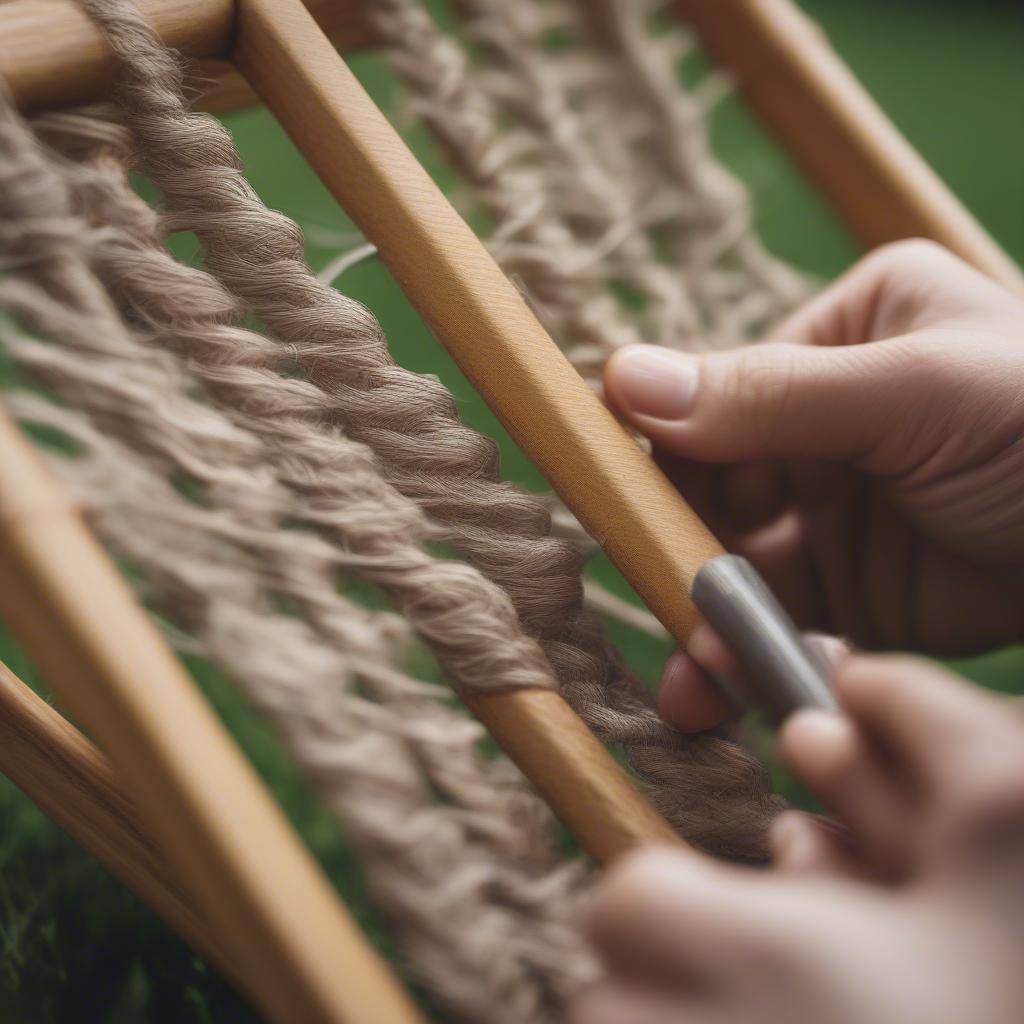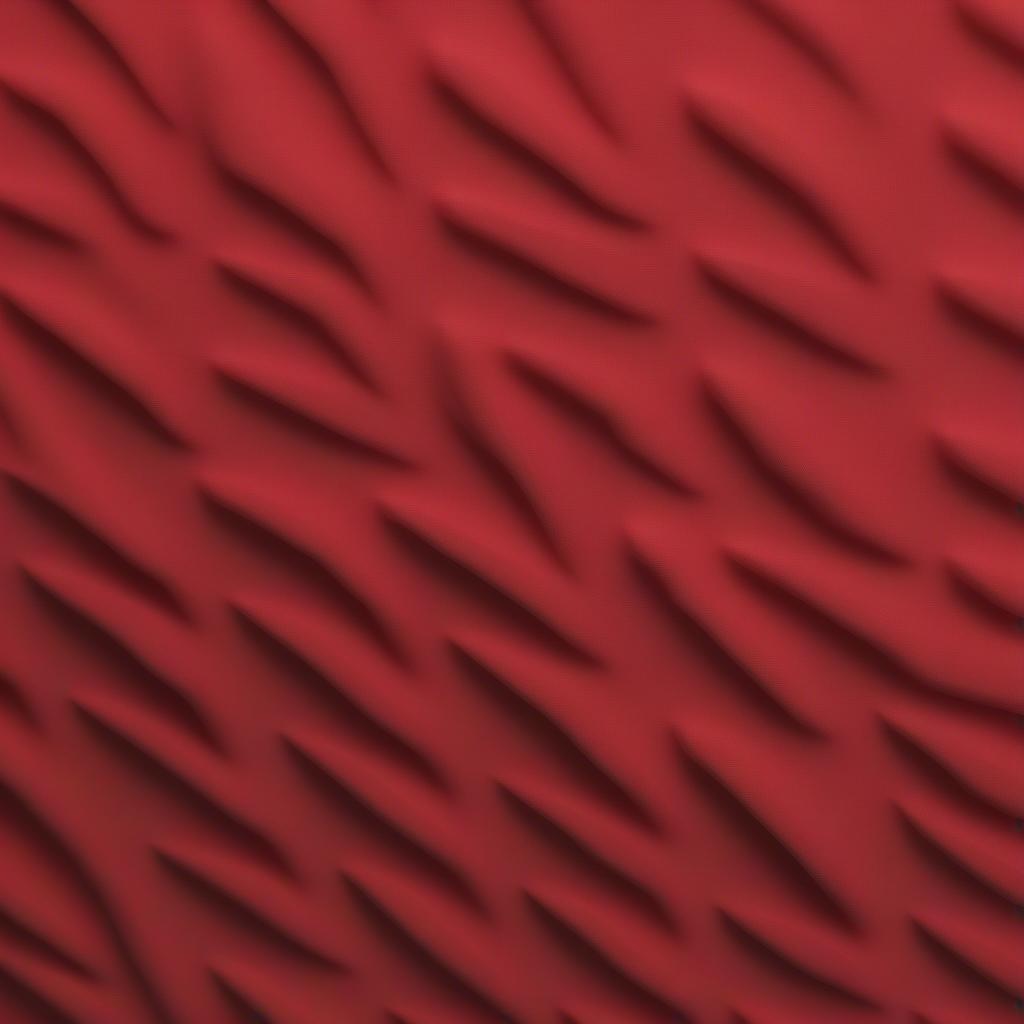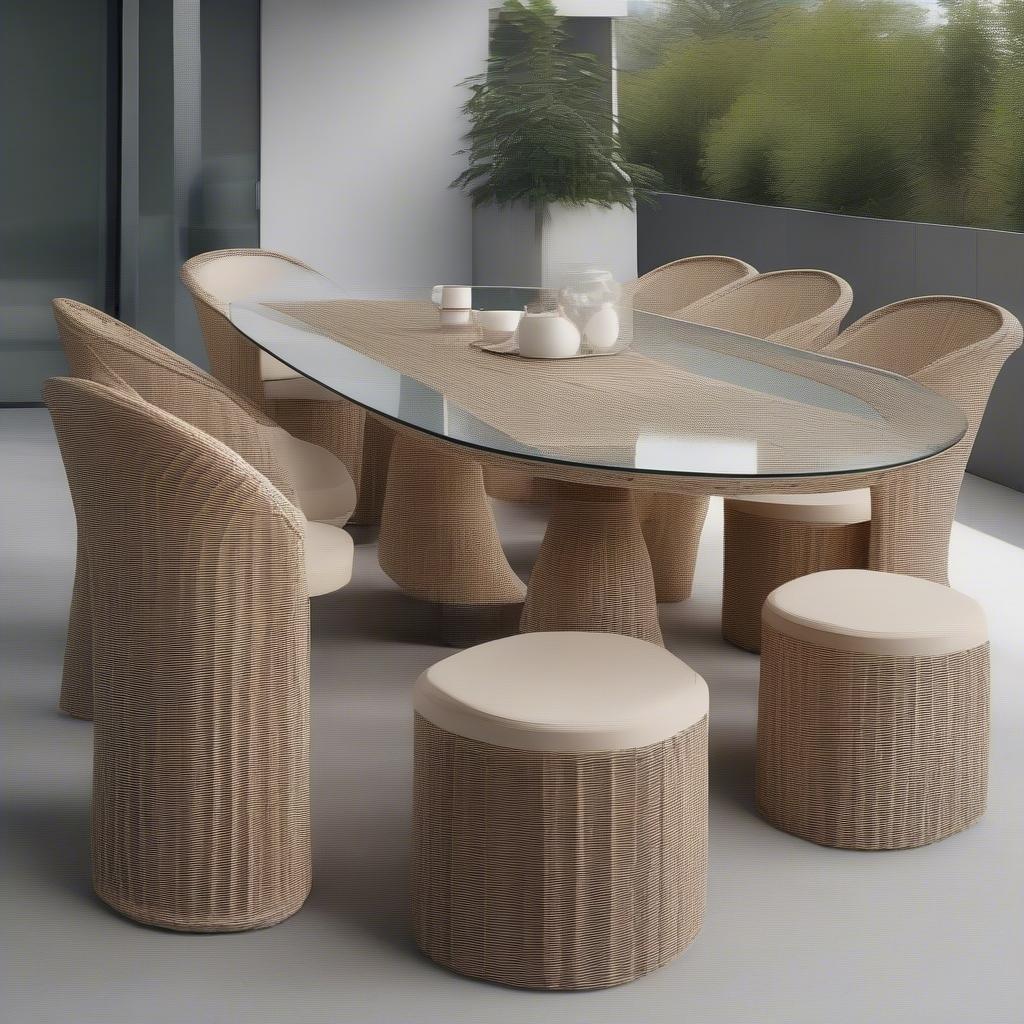Weave Chair
Lawn Chair Weaving Material: A Comprehensive Guide
Choosing the right Lawn Chair Weaving Material is crucial for comfort, durability, and aesthetics. Whether you’re repairing a beloved vintage chair or crafting a brand new piece, understanding the properties of different materials will help you make an informed decision. This guide explores the diverse world of lawn chair weaving materials, from traditional options to modern synthetics, offering insights into their strengths, weaknesses, and ideal applications.
Natural Fibers: The Classic Choice for Lawn Chair Weaving Material
Natural fibers have been used for chair weaving for centuries, offering a unique blend of comfort, durability, and aesthetic appeal.  Natural fibers like rattan and wicker being used to weave a lawn chair Let’s explore some of the most popular choices:
Natural fibers like rattan and wicker being used to weave a lawn chair Let’s explore some of the most popular choices:
Rattan: Strength and Flexibility
Rattan, a naturally strong and flexible material derived from climbing palms, is a popular choice for lawn chair weaving. Its durability and resistance to weather make it perfect for outdoor use. Rattan’s natural beauty adds a touch of elegance to any outdoor space.
Wicker: A Timeless Weaving Tradition
Wicker isn’t a material itself, but rather a weaving technique traditionally using materials like willow, reed, or rattan. Wicker furniture offers a classic, rustic look, adding charm and character to your patio or garden. chair weaving patterns can be intricate and varied, adding another layer of visual interest to the piece.
Seagrass: A Sustainable and Stylish Option
Seagrass, a fast-growing and renewable resource, is an eco-friendly option for lawn chair weaving. It offers a unique textured appearance and is surprisingly durable, making it a stylish and sustainable choice.
Synthetic Materials: Durability and Low Maintenance
Synthetic materials offer a modern alternative to natural fibers, often providing increased durability and low maintenance. They are resistant to weather, fading, and mildew, making them ideal for outdoor furniture.
HDPE (High-Density Polyethylene): Weather-Resistant and Long-Lasting
HDPE is a popular synthetic material known for its exceptional weather resistance and durability. It’s resistant to cracking, splitting, and fading, ensuring your lawn chair maintains its appearance for years to come.  Close-up of HDPE material used in lawn chair weaving. Many prefer HDPE for its low maintenance requirements.
Close-up of HDPE material used in lawn chair weaving. Many prefer HDPE for its low maintenance requirements.
PVC (Polyvinyl Chloride): Versatile and Affordable
PVC is a versatile and affordable synthetic material often used for outdoor furniture. It is easy to clean and maintain, making it a practical choice for busy households. However, PVC can be less resistant to extreme temperatures than other synthetics.
Choosing the Right Lawn Chair Weaving Material: Factors to Consider
Selecting the right material depends on several factors, including your budget, desired aesthetic, and the climate you live in. Consider the following:
- Durability: How much wear and tear will the chair experience?
- Weather Resistance: Will the chair be exposed to rain, sun, and extreme temperatures?
- Maintenance: How much time and effort are you willing to dedicate to cleaning and upkeep?
- Aesthetics: What style and look are you trying to achieve?
- Cost: What is your budget for lawn chair weaving material?
“Choosing the right material is like choosing the right foundation for a house. It’s crucial for long-term satisfaction,” says John Miller, a furniture craftsman with over 20 years of experience.
Which Material is Best for Weaving a Lawn Chair?
The “best” material depends on individual needs and preferences. Natural fibers offer a classic look and feel, while synthetics provide increased durability and low maintenance. lawn chair weave can vary greatly depending on the material used, affecting both the comfort and appearance of the chair. Consider your priorities and choose the material that best meets your specific requirements.
 A comparison chart showcasing different lawn chair weaving materials.
A comparison chart showcasing different lawn chair weaving materials.
“Think about how you’ll use the chair and the environment it will be in,” advises Emily Carter, a renowned interior designer specializing in outdoor spaces. “A poolside chair needs different material considerations than a chair on a covered porch.”
Conclusion: Finding the Perfect Lawn Chair Weaving Material
Choosing the right lawn chair weaving material is essential for creating a comfortable, durable, and stylish piece. Whether you opt for the natural beauty of rattan and wicker or the practicality of synthetics like HDPE, understanding the unique properties of each material will help you make an informed decision. With the right lawn chair weaving material, you can enjoy your outdoor space for years to come.
FAQ
-
What is the most durable lawn chair weaving material?
HDPE is generally considered the most durable option. -
What is the most eco-friendly lawn chair weaving material?
Seagrass is a sustainable and rapidly renewable resource. -
Is rattan or wicker better for outdoor use?
Both are suitable, but rattan is generally stronger and more weather-resistant. -
How do I clean woven lawn chairs?
Cleaning methods vary depending on the material. Check the manufacturer’s instructions. -
Can I repair woven lawn chairs myself?
Minor repairs are often possible with the right tools and materials. weaving rope for chair can be found online or at craft stores. -
What is the average lifespan of a woven lawn chair?
Lifespan varies depending on the material, usage, and care. -
Where can I find lawn chair weaving supplies?
Craft stores, online retailers, and specialty furniture stores.
Other questions you might consider are how to choose the right color and pattern for your lawn chair weaving and how to maintain your woven furniture for optimal longevity. You can find more information about different weaving ropes on our website.
When you need assistance, please contact our Hotline: +84 388 951 999, or visit our offices in Hanoi, Vietnam or Tech Avenue, Suite 12, San Francisco, CA 94105, USA. We have a 24/7 customer service team ready to help you.
